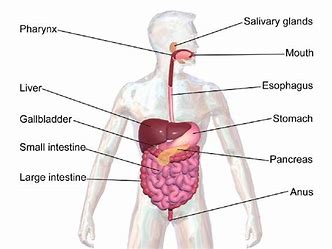Understanding the Esophagus: The Lifeline of Digestion


When we think about the journey our food undertakes after we savor its taste, we often overlook the critical pathway it traverses before reaching the stomach. This pathway, or the ‘food pipe,’ is scientifically termed the esophagus(Food pipe). Let’s delve into the anatomy, function, and significance of this remarkable organ.
What is the Esophagus?
The esophagus, colloquially known as the food pipe or gullet, is a muscular tube that forms an essential part of the human digestive system12. It serves as the conduit for food and liquids that have been swallowed into the mouth to reach the stomach. The esophagus begins at the end of the throat, behind the trachea, and travels down the neck, through the diaphragm, and into the stomach.
Anatomy of the Esophagus
Approximately 25 cm (10 inches) in length in adults, the esophagus is lined with a series of muscles that contract rhythmically, a process known as peristalsis, to propel food towards the stomach2. This muscular marvel is not just a passive tube; it’s an active organ that ensures whatever we swallow doesn’t just fall into our stomach but is pushed down in a coordinated manner.
The Layers of the Esophagus
The wall of the esophagus comprises various layers, each with a specific function:
- Mucosa: This innermost layer is a moist tissue that helps food slide down easily.
- Submucosa: It contains glands that produce mucus, further easing the passage of food.
- Muscularis Propria: Two layers of muscle fibers, circular and longitudinal, facilitate peristalsis.
- Adventitia: The outermost layer that connects the esophagus with neighboring structures.
The Role of the Esophagus in Digestion
While the esophagus doesn’t participate in the chemical breakdown of food, its role in digestion is indispensable. It starts with the act of swallowing. When we swallow, the epiglottis flips down to ensure that food enters the esophagus and not the windpipe, preventing choking. The food then embarks on a downward journey, propelled by peristaltic waves, until it reaches the lower esophageal sphincter. This sphincter acts as a gatekeeper, opening to let food into the stomach and closing to prevent gastric acids from entering the esophagus.
Common Esophageal Conditions
Despite its robustness, the esophagus is susceptible to various conditions:
- Gastroesophageal Reflux Disease (GERD): A condition where stomach acid frequently flows back into the esophagus, irritating its lining.
- Barrett’s Esophagus: Long-term GERD can lead to changes in the esophageal lining, increasing the risk of esophageal cancer.
- Esophageal Cancer: A serious condition that can occur in any part of the esophagus.
- Esophageal Varices: These are abnormally enlarged veins in the esophagus that can bleed heavily.
Conclusion
The esophagus, or the food pipe, is more than just a simple tube. It’s a dynamic structure that plays a pivotal role in the digestive process. Understanding its function and taking care of this vital organ is essential for maintaining digestive health. Whether it’s mindful eating, managing stress, or seeking medical advice for persistent heartburn, attention to esophageal health is a step towards overall well-being.

